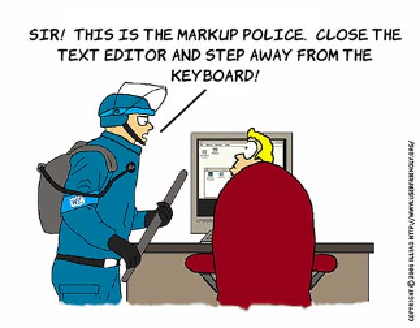HTML and CSS Reference
In-Depth Information
Nonvisible elements
Some
HTML
elements aren't intended to be visible in the page. These
usually appear in the head section of the markup, although they can
appear anywhere. You've seen at least one example already: the
<title>
element, which is usually visible only in the title bar or tab of the
browser, or in search results. Three other elements are commonly seen
in the head section:
<link>
elements
—Reference external resources such as style sheets
❂
<script
> elements
—Specify code to be run in the browser
❂
<meta>
elements—
Provide key-value pairs of metadata
❂
Style sheets and scripting are covered in the next two appendixes, but
the
<meta>
element isn't too important. Just remember when you come
across one that it isn't expected to be displayed.
In the previous sections, there have been a few statements along the
lines of, “You can't put a paragraph element inside a heading element”
and, “Inline elements should only contain other inline elements, not
block elements.” But what do those statements really mean? The next
section considers these issues.
Parsing and validation
What will happen to you and your web pages if you ignore the advice
given in the previous sections? If you nest a
<div>
inside a
<span>
and

